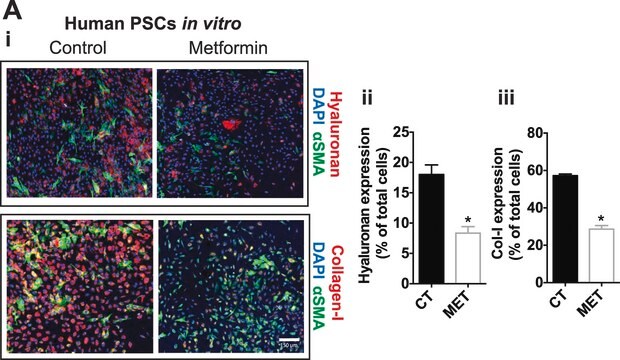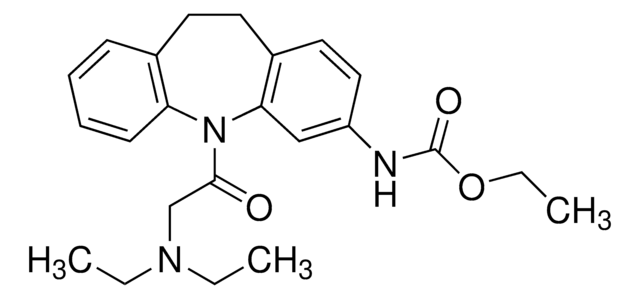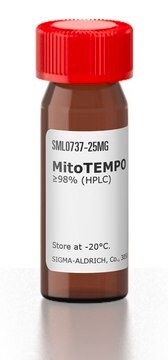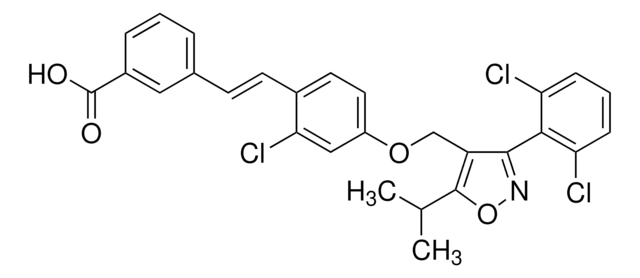T1443
TCPOBOP
≥98% (HPLC), solid
Synonym(s):
1,4-Bis-[2-(3,5-dichloropyridyloxy)]benzene, 3,3′,5,5′-Tetrachloro-1,4-bis(pyridyloxy)benzene
Sign Into View Organizational & Contract Pricing
All Photos(1)
About This Item
Empirical Formula (Hill Notation):
C16H8N2O2Cl4
CAS Number:
Molecular Weight:
402.06
MDL number:
UNSPSC Code:
12352200
PubChem Substance ID:
NACRES:
NA.77
Recommended Products
Quality Level
Assay
≥98% (HPLC)
form
solid
color
white
solubility
DMSO: >10 mg/mL
H2O: insoluble
storage temp.
2-8°C
SMILES string
Clc1cnc(Oc2ccc(Oc3ncc(Cl)cc3Cl)cc2)c(Cl)c1
InChI
1S/C16H8Cl4N2O2/c17-9-5-13(19)15(21-7-9)23-11-1-2-12(4-3-11)24-16-14(20)6-10(18)8-22-16/h1-8H
InChI key
BAFKRPOFIYPKBQ-UHFFFAOYSA-N
Gene Information
human ... NR1I3(9970)
Application
TCPOBOP has been used for enhancing Mcl-1-Italics promoter functions in mouse hepatoma cells. TCPOBOP has also been used to study constitutive androstane receptor(CAR)-induced gene expression in mouse hepatocytes.
Biochem/physiol Actions
TCPOBOP enhances the nuclear receptor CAR transactivation of cytochrome P450 (CYP), as dose-dependent direct agonist of CAR. The most potent known member of the phenobarbital-like class of CYP-inducing agents.
Features and Benefits
This compound is a featured product for Apoptosis research. Click here to discover more featured Apoptosis products. Learn more about bioactive small molecules for other areas of research at sigma.com/discover-bsm.
Preparation Note
TCPOBOP is soluble in DMSO at a concentration that is greater than 10 mg/ml. It is insoluble in water.
Storage Class Code
11 - Combustible Solids
WGK
WGK 3
Flash Point(F)
Not applicable
Flash Point(C)
Not applicable
Personal Protective Equipment
dust mask type N95 (US), Eyeshields, Gloves
Choose from one of the most recent versions:
Already Own This Product?
Find documentation for the products that you have recently purchased in the Document Library.
Albert Braeuning et al.
Drug metabolism and disposition: the biological fate of chemicals, 37(5), 1138-1145 (2009-02-25)
Basal as well as xenobiotic-induced expression of the main enzymes from phase I and phase II of drug metabolism is confined to the perivenous areas of the mammalian liver lobule. Whereas signal transduction pathways that govern xenobiotic-induced expression of these
Christopher Reed et al.
The American journal of pathology, 184(6), 1853-1859 (2014-04-15)
Diverse etiologic events are associated with the development of hepatocellular carcinoma. During hepatocarcinogenesis, genetic events likely occur that subsequently cooperate with long-term exposures to further drive the progression of hepatocellular carcinoma. In this study, the frequent loss of the retinoblastoma
Nicholas J Lodato et al.
Toxicological sciences : an official journal of the Society of Toxicology, 164(1), 115-128 (2018-04-05)
Activation of the nuclear receptor and transcription factor CAR (Nr1i3) by its specific agonist ligand TCPOBOP (1, 4-bis[2-(3, 5-dichloropyridyloxy)]benzene) dysregulates hundreds of genes in mouse liver and is linked to male-biased hepatocarcinogenesis. To elucidate the genomic organization of CAR-induced gene
Josiah E Hardesty et al.
Xenobiotica; the fate of foreign compounds in biological systems, 47(9), 807-820 (2016-07-28)
1. Polychlorinated biphenyls (PCBs) are persistent environmental pollutants that disrupt hepatic xenobiotic and intermediary metabolism, leading to metabolic syndrome and nonalcoholic steatohepatitis (NASH). 2. Since phenobarbital indirectly activates Constitutive Androstane Receptor (CAR) by antagonizing growth factor binding to the epidermal growth factor
Savvina Moustafa et al.
Journal of virology, 92(9) (2018-02-16)
Viruses often encompass overlapping reading frames and unconventional translation mechanisms in order to maximize the output from a minimum genome and to orchestrate their timely gene expression. Hepatitis C virus (HCV) possesses such an unconventional open reading frame (ORF) within
Our team of scientists has experience in all areas of research including Life Science, Material Science, Chemical Synthesis, Chromatography, Analytical and many others.
Contact Technical Service





